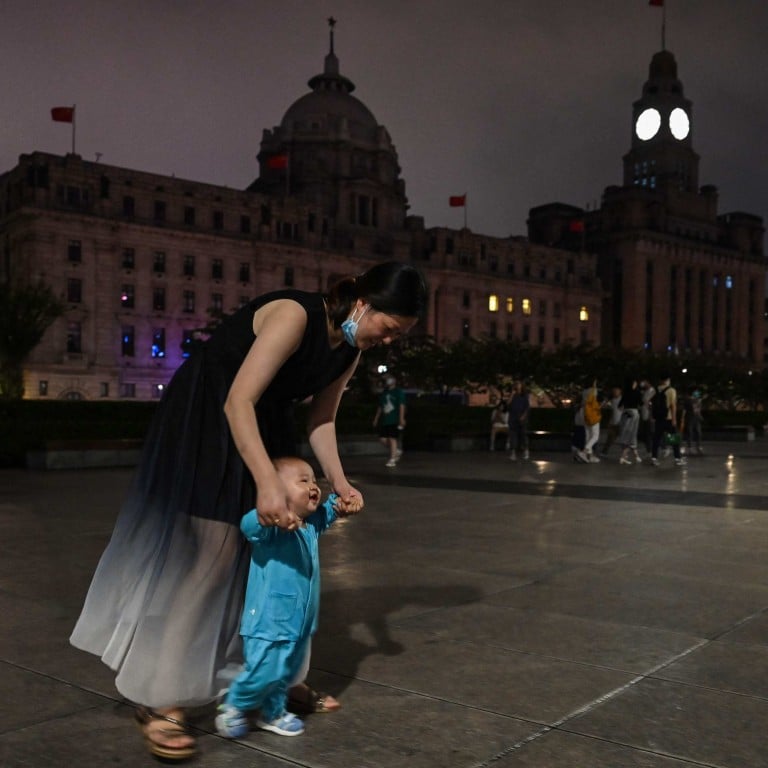
Explainer | China’s power crisis: why is it happening and what does it mean for the economy?
- China is facing a power shortage due to heatwaves and drought, affecting the Yangtze River basin, home to factories and a large population
- The power crisis has been triggered by extreme weather, which is likely to become more frequent as the planet warms due to climate change
What is happening with China’s power supply?
Since mid-July, China’s electricity load has spiked due to demand for air-conditioning during the peak summer season.
In July, electricity consumption rose by 6.3 per cent year on year, with residential consumption jumping 26.8 per cent, according to the National Energy Administration.
A total of 19 provincial power grids have broken records for electricity loads, the state-owned CCTV said. Meanwhile, consumption continues to rise in August, according to the China Electricity Council.
As a result, power restrictions have been imposed on various economic and manufacturing hubs along the Yangtze River.
Could blackouts push factories out of China’s hydropower-reliant southwest?
The southwestern province of Sichuan and Chongqing city on the upper reaches of the river have been the worst affected.
Sichuan has enforced a production shutdown across various industries since August 15. Some cities including the provincial capital Chengdu have issued power restrictions on commercial and residential power use.
Jiangsu, Anhui, Zhejiang and Shanghai have also limited power that has affected manufacturing and business activities.
Why is China facing an energy crisis?
China has been gripped by its worst heatwave since records began in 1961. The extreme heat has led to drought conditions in parts of southern China, which has lowered water levels in hydropower reservoirs.
Provinces like Sichuan and Yunnan rely on hydropower for energy supply. Dry periods create risks for companies and especially industries that require continuous production, such as Sichuan’s speciality electrolytic aluminium.
The Yangtze River, and two of China’s largest freshwater lakes in the basin, Dongting and Poyang, are at historically low water levels and are expected to continue to shrink. Dozens of rivers and reservoirs in the region have dried up.
Why has Sichuan suffered so much?
Sichuan has undoubtedly been the worst-hit by power shortages. This is not only because it has suffered extreme weather, but because hydropower generates around 80 per cent of its electricity.
In 2021, the province ranked sixth in China in terms of total power generation. It is No 1 for hydropower production, followed by Yunnan.
Reduced hydropower generation in Sichuan also affects the nation’s overall electricity supply, as Sichuan is one of China’s major power exporting provinces.
Electricity generated in the province is sent to the middle and lower reaches of the Yangtze River as part of the “West-East electricity transmission project”. It is exported to Jiangsu, Zhejiang, Shanghai and neighbouring Chongqing city, which is also struggling with power shortages.
Sichuan’s electricity infrastructure is insufficient to import large volumes from other areas.
What is the economic impact of the energy crisis?
Sichuan issued the most serious production shutdown on August 15. The southwestern manufacturing hub has a large number of factories making chemical products, electronic components, lithium batteries, polysilicon and aluminium.
Zhejiang, Anhui and Jiangsu provinces also introduced power curbs, affecting steel, non-ferrous metals, polyester, textiles and electronic producers.
Rain may not cool China’s economic woes as impact could be ‘felt for months’
While the overall economic impact of the restrictions is expected to be limited, Sichuan and Chongqing are important manufacturing hubs for EV batteries, electronic components for semiconductors, solar panels, and computers.
The livestock industry in Sichuan has also been affected, mainly due to the shutdown of feed mills and the death of animals after air conditioners were shut down on farms. This problem is currently concentrated in poultry farming.
Is the energy shortage a short or long-term problem for China?
Though extreme weather is the direct cause of the electricity shortage, China faces long-term challenges.
China’s carbon emissions continue to rise as a leading economic and manufacturing hub with a population of 1.4 billion. The country is the world’s biggest polluter, making it critical to global climate goals.
China’s power sector also faces structural issues. Investment is lagging behind growth in electricity consumption.
In 2021, the compound growth rate of investment in China’s electricity infrastructure declined by 2.7 per cent compared with 2018, while electricity consumption has grown at a high compound rate of 6.7 per cent, according to Essence Securities, a Chinese financial company.
While fossil fuels, notably coal-fired power, still account for most of China’s energy mix, investment is shifting fast to renewables like solar and wind. Transitioning away from fossil fuels will help China meet its climate change goals, but renewable sources provide intermittent supply, making it difficult to provide base load power.
How will China cope?
Beijing has stressed there will be no repeat of the power crisis that rocked the country last year, with President Xi Jinping vowing that China “will never allow a major incident like large-scale power cuts to happen again”.
Earlier this month, Vice-Premier Han Zheng said China will step up support for coal-fired power plants and miners to ensure stable energy supply.
China to burn more coal as heatwave, drought threaten power supply
As a result, coal projects in China – the world’s largest consumer of the fossil fuel – continue to expand, undermining efforts to tackle climate change.
In the fourth quarter of 2021, newly approved coal-fired power capacity increased 36.3 per cent year on year, while in the first quarter of this year it jumped 103.1 per cent, according to Essence Securities.
Guangdong, the wealthiest province in China, will add 6.7 million kilowatts of coal power projects, with the goal to have them online before 2024
In February, China’s steel industry, the second largest carbon emitter, delayed carbon peaking by five years to 2030.



